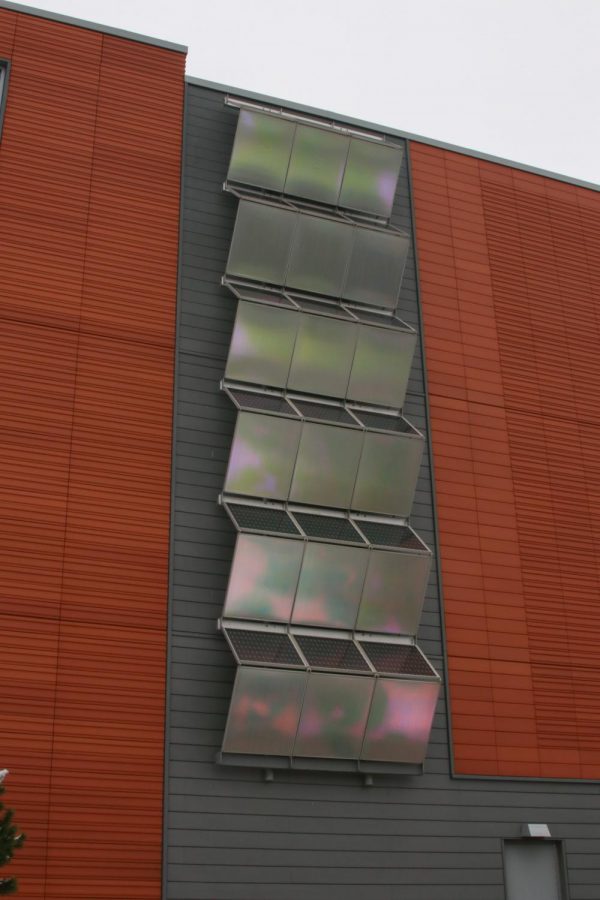Hamline’s Environmental Friendliness
What Hamline is currently doing to be eco-friendly and how students can get involved
October 28, 2020
Hamline defines sustainability as “the conditions under which all people can thrive in the long term.” Professor Valentine Cadieux, the Director of Environmental Studies and Director of Sustainability at Hamline, is one of the main individuals involved in Hamline sustainability.
When it comes to sustainability, preparing for the future involves more than the bare minimum.“Thriving in the long term, it’s not enough to have eco-friendliness that allows, like, just surviving. We should be striving to cultivate a relationship with land and environment that allows everybody to thrive,” Cadieux said.
According to Cadieux, determining the eco-friendliness of something involves identifying its source and its destination.
“Evaluating whether a particular behavior or a particular product or a particular program is eco-friendly or not might have questions like ‘what are the implications of where this comes from or where it goes?’ So we often think about this when we’re trying to do programming, for example, around material stewardship on campus,” Cadieux said.
Cadieux believes that Hamline is in a good place when it comes to eco-friendliness. This has to do with Hamline’s curriculum, mission and community involvement.
“I think partly because Hamline’s curriculum and mission is so set up around justice and understanding what it means to live together in the world that it’s really helpful with the profound shared governance with the actual resilience and ability to face the challenges of climate change and environmental contamination…I also think the staff, faculty and students are really engaged,” Cadieux said.
One of the biggest environmental footprints of Hamline is the amount of energy for heat. This is especially evident at this time of year because we are in such a cold climate and have a large amount of indoor space.
“We have just a lot of people who are really ingenious at coming up with systems…. the whole heating and cooling system. There are all of these tweaks that have been made to make it more efficient and make it use less fuel,” Cadieux said.
One thing the Hamline community can do to help the campus be more eco-friendly is thinking about why our actions matter for the future.

Solar panels on Anderson Center provide sustainable energy.
“When we’re learning, thinking ‘how is this helping us learn together to face a future?’ I mean, realistically, the future is kind of bleak. Like, there are a lot of challenges that we don’t know how to meet,” Cadieux said. “There are some great arguments in sustainability literature that suggest that the degree to which we find comfort and certainty makes us less equipped to deal with situations in which they’re inherently uncertain. And that we basically need more humility when we face the future to be willing to learn and to be surprised.”
Cadieux also suggests that being more collaborative instead of being competitive, and being more resourceful instead of being consumerist is how we can get closer to solutions.
Additionally, she emphasizes the importance of Hamline as an institution having conversations on how to better approach sustainability; “For an institution, being willing to ask those learning questions like when we’re budgeting, how can we budget together? And are the expenditures we’re making actually meeting people’s needs? And we always know there’s not enough to go around for everyone’s needs, but like, can we have conversations about the future that allows us not to keep making the mistakes of the past? Like, that’s sustainability,” Cadieux said.
After a few intensive years and thanks to over 80 faculty members, sustainability is now incorporated into Hamline classes such as English, biology, ethics and criminal justice.
“At the end of the day, these problems we have to face are not going to be fixed by one discipline or one set of people. Kind of everybody has to figure out what they can bring,” Cadieux said.
Regarding sustainability involvement on campus, check out the free store in Drew Science Center which is new to campus this fall and part of the Pack and Give Back Program. The Hamline Environmental Action League (HEAL), which promotes environmental activism and sustainable living, is also welcoming students and can be contacted by emailing heal@hamline.edu or going to their website www.sustainability.hamline.edu.
